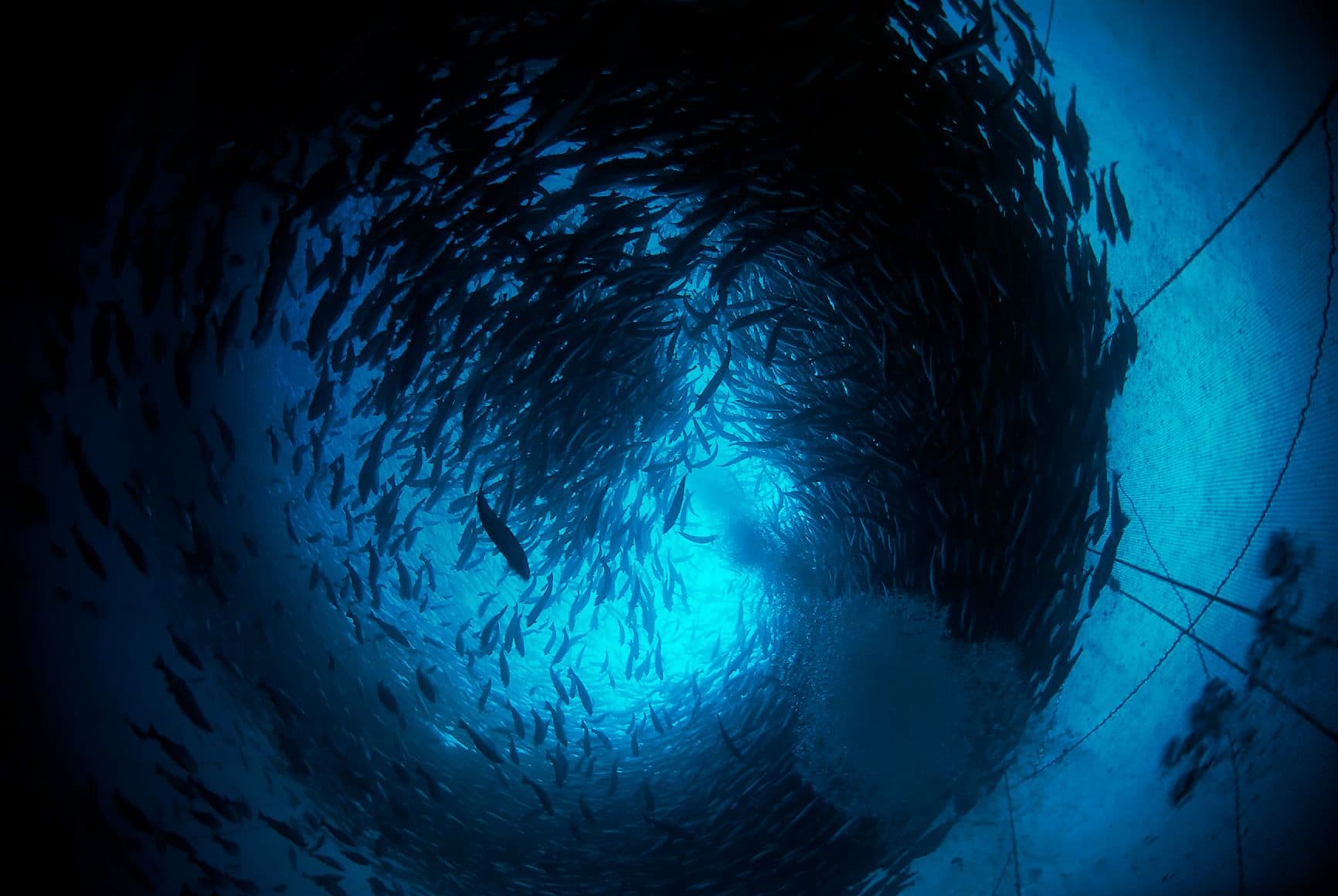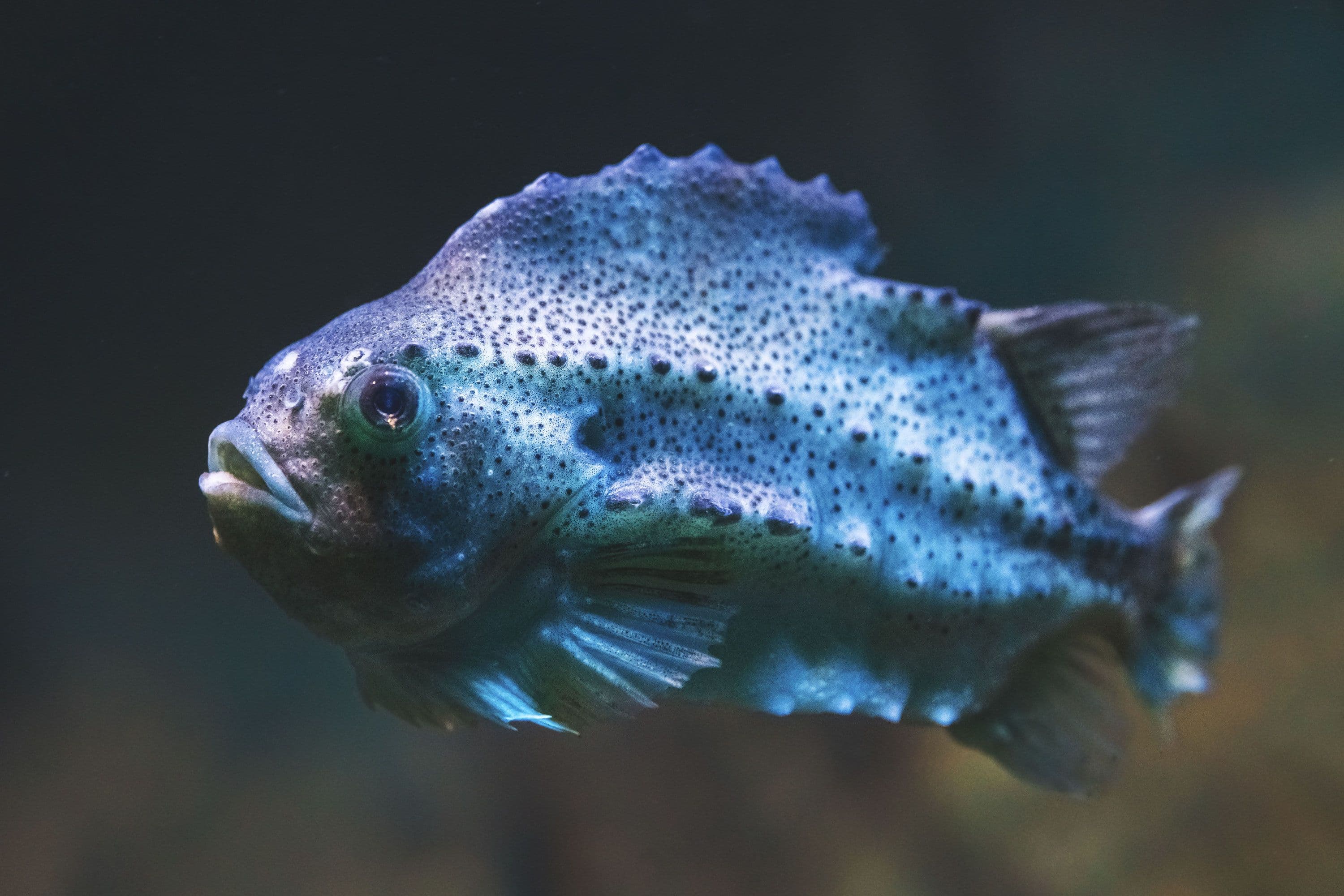
Improving fish health
Our global fish health policy has implemented guidelines from the World Organization for Animal Health (OIE). It is based on the following main principles:
- Minimize pathogens (harmful micro-organisms) to enter the farms
- Intake of healthy and robust roe and fish
- Strict hygienic control of boats, feed, people or any equipment taken into the farms
- Minimize pathogens to multiply within the fish farm environment
- Daily removal of sick or dead fish
- Feed program targeted for each fish species and stage of the life cycle
- Intake of fish with physiology to thrive in the farm
- Intake of fish vaccinated with available and effective vaccines relevant for the area
- Continuous health surveillance and rapid start-up if with necessary measures during disease outbreaks
- Minimize any environmental health risk to the fish
- Regular monitoring water quality as temperature, oxygen, salinity according to local risks. In our freshwater facilities, we control and adjust these factors to ensure healthy growth conditions for the fish. Oxygen levels in the water are also monitored and adjusted during transport of the fish in well boats.
- Monitoring of algae and jellyfish blooms in periods of risk.
- Monitoring seabed regularly to avoid hard load to develop, and fallowing periods according to local environmental conditions. Read more about our efforts to keep the environment around the farm healthy here.
We have regular fish health inspections and screening programs at all sites by authorized fish health personnel to achieve early detection of diseases and implement early measures.
Examples of efforts to improve fish health
Post smoltKeeping the fish longer on land or in closed containment systems and reducing the time in sea, is one of our main efforts to improve fish health and welfare. With post smolt, we reduce the time that the salmon is exposed to external environmental risks such as sea lice, algae blooms, low oxygen levels and more. Read more about our post smolt strategy here.Mitigating harmful algal blooms
We have made progress in monitoring, detecting and mitigating the impact of harmful algal blooms. Read more about these efforts here.Digitalization While still in the early stages, we do believe that digitalization, machine learning and data analytics will provide decision support to farmers and help us improve fish health and welfare. Read more about our work with digitalization here.
Improving fish welfare
There is no universal definition of animal welfare, but we accept that every fish is an individual with a perception of life. We regard fish welfare as the quality of life as perceived by the animal itself.
Grieg Seafood seeks to fulfill “the five freedoms for animals under human control”:- freedom from hunger, thirst, and malnutrition;
- freedom from fear and distress;
- freedom from discomfort;
- freedom from pain, injury and disease; and
- freedom to express normal patterns of behavior
Our global fish welfare policy has implemented guidelines from the World Organization for Animal Health (OIE). It is based on the following main principles:
Minimize any discomfort to the fish during its life time in our fresh water facilities and farms
- Regular risk based water monitoring for early detection of dangers and rapid implementation of measures
- Careful handling of any live fish during treatments, grading, transport etc
- Monitoring welfare indicators during treatments in sea water for early detection of damages and rapid implementation of measures
- Regular fish health control for early detection of diseases and rapid implementation of measures
Ensure that all live fish is anesthetized prior to killing
- Access to necessary drugs and equipment in all production plants to anesthetize and kill weak fish
- Training course in anestetic, control of reflexes and culling every fifth year for all staff involved in fish production
- Training course in anestetic, control of reflexes and bleeding every fifth year for all staff involved in killing at slaughter
Environmental enrichment
Based on the current knowledge, we are providing opportunities for positive affective states, such as:
- An environment simulating natural habitat where the freshly hatched alevins can hide
- Spacious environment with the opportunity to search for resources and explore the environment freely
- The opportunity to shoal with other fish
However, more research is needed to develop knowledge about this topic further.
Monitoring fish welfare
To improve and standardize monitoring of fish welfare, we are developing our own system for assessment. The evaluation is informed by the FISHWELL research project, and conducted for each pen by fish professional health personnel during their monthly or bimonthly health checks.Each pen is assessed on the following indicators, with a score from 1-5:
- Presence of moribund fish
- Mortality levels
- Sea lice (L. Salmonis and Caligus sp.)
- Impact by preditors
- Appetite (average over the last week)
- Water quality (including oxygen levels, temperature, and impact by algae/jellyfish)
The system is still under testing and development.
Some of these parameters, such as fish density, mortality, appetite and water quality, are monitored each day at every facility by our staff or via digital tools. Appropriate measures are applied if scores reach identified thresholds on the various indicators.
There is still a lot to learn about fish welfare, including finding good ways to measure it. Today, we find that appetite is the best single indicator of whether our fish has good welfare, as fish with good health and welfare eat well and according to predicted parameters. However, more research and knowledge is needed to advance this area further.
Use of antibiotics
Antibiotics is only used as a last resort to treat bacterial diseases when fish health and fish welfare are threatened. In Norway, effective vaccines have reduced our use of antibiotics to zero.
We adhere to the following principles for use of antibiotics:
- Antibiotics is only used as a last resort to treat bacterial diseases when fish health and fish welfare are threatened and never as a growth-promotor.
- All farming operations are in compliance with the WHO Guidelines on Use of Medically Important Antimicrobials in Food Producing Animals
- Antibiotics on the WHO list of Highest Priority Critically Important Antibiotics should not be used
- Antibiotics with low bio availability (oxytetracycline) should not be used.
- Antibiotics must be prescribed by authorized fish health personnel and only drugs licensed as veterinary medicine should be used. The prescription must be approved by central management in Grieg Seafood ASA.
- Withdrawal periods for medicine use are rigorously controlled and documented.


